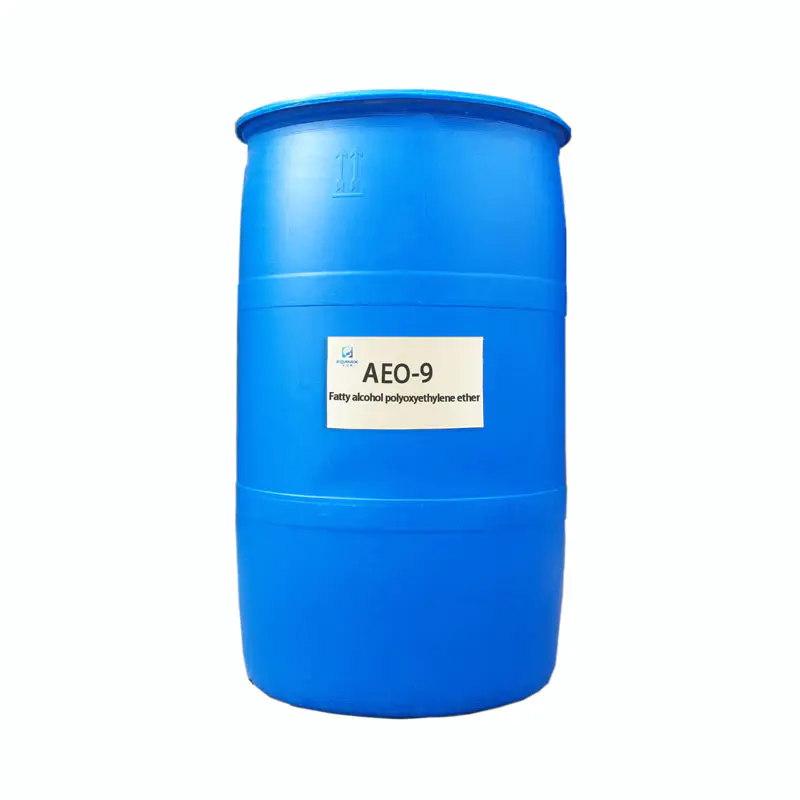The Chemistry and Sustainability of Lauryl Alcohol Ethoxylate AEO-9
2025-01-13
With growing concerns about sustainability and environmental impact, the chemical industry is under increasing pressure to develop products that are effective, safe, and eco-friendly. Lauryl Alcohol Ethoxylate AEO-9, a nonionic surfactant, has garnered attention due to its beneficial properties and relatively low environmental footprint. This blog will explore the chemistry behind AEO-9, how it is produced, and its role in sustainable formulations.
The Chemistry of AEO-9: Breaking It Down
Lauryl Alcohol Ethoxylate AEO-9 is made through the reaction of lauryl alcohol with ethylene oxide. Here’s a step-by-step breakdown of the chemical process:
1. Lauryl Alcohol: Lauryl alcohol, or dodecanol, is a long-chain fatty alcohol (C12H26O) that is often derived from natural sources like coconut oil or palm kernel oil. It is a hydrophobic (water-repelling) molecule.
2. Ethoxylation Process: In the ethoxylation process, ethylene oxide (C2H4O) is reacted with lauryl alcohol under controlled conditions. This adds ethylene oxide units to the lauryl alcohol molecule, making the resulting compound more hydrophilic (water-attracting). In the case of AEO-9, nine ethylene oxide units are added.
3. Structure of AEO-9: The resulting compound is a hydrophilic-lipophilic balance (HLB) surfactant, where the long hydrophobic tail (lauryl alcohol) interacts with oils, and the hydrophilic head (ethylene oxide) interacts with water. The "9" in AEO-9 refers to the degree of ethoxylation, indicating that nine ethylene oxide units are attached to each lauryl alcohol molecule.
How AEO-9 Contributes to Sustainability
1. Biodegradability: One of the most important sustainability features of Lauryl Alcohol Ethoxylate is its biodegradability. It breaks down more quickly in the environment compared to many other surfactants, reducing the potential for long-term ecological impact.
2. Renewable Sourcing: Lauryl alcohol is often derived from renewable plant sources, such as coconut oil and palm kernel oil. This makes AEO-9 a more sustainable alternative to surfactants derived from petrochemical sources.
3. Reduced Toxicity: AEO-9 is generally considered to have low toxicity to aquatic life compared to other surfactants. This makes it a safer choice in products that might end up in water sources, like cleaning agents or personal care products.
4. Minimal Environmental Impact: As a nonionic surfactant, AEO-9 is less sensitive to the ionic composition of water, which means it is effective in a wider range of conditions. This reduces the need for additional chemicals to adjust the formulation, thereby minimizing environmental impact.
AEO-9 in Green Chemistry
The use of Lauryl Alcohol Ethoxylate AEO-9 in green chemistry formulations is on the rise. As consumers and industries move toward more eco-conscious options, AEO-9 provides a safer, more sustainable solution without compromising on performance.
Green chemistry principles emphasize reducing the use of hazardous chemicals and improving energy efficiency. AEO-9 aligns with these principles because it is:
- Derived from renewable resources
- Biodegradable
- Non-toxic to aquatic life
- Effective in a wide range of pH and temperature conditions, reducing the need for additional stabilizers or buffers.
Lauryl Alcohol Ethoxylate AEO-9 offers a unique combination of performance, sustainability, and versatility. Its mildness, biodegradability, and eco-friendly production make it an appealing option for both consumers and manufacturers. As the demand for more sustainable chemicals grows, AEO-9 is likely to play a key role in the development of green formulations across a variety of industries, from cosmetics to industrial cleaners.
By choosing ingredients like AEO-9, industries can help reduce their environmental footprint while still delivering effective, high-quality products. It’s a win-win for both consumers and the planet.



